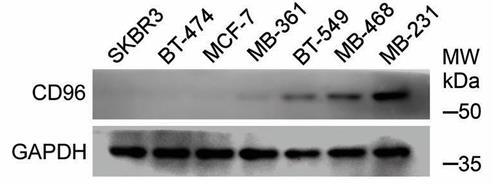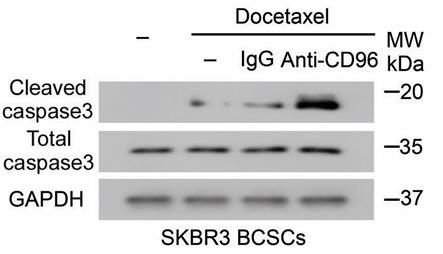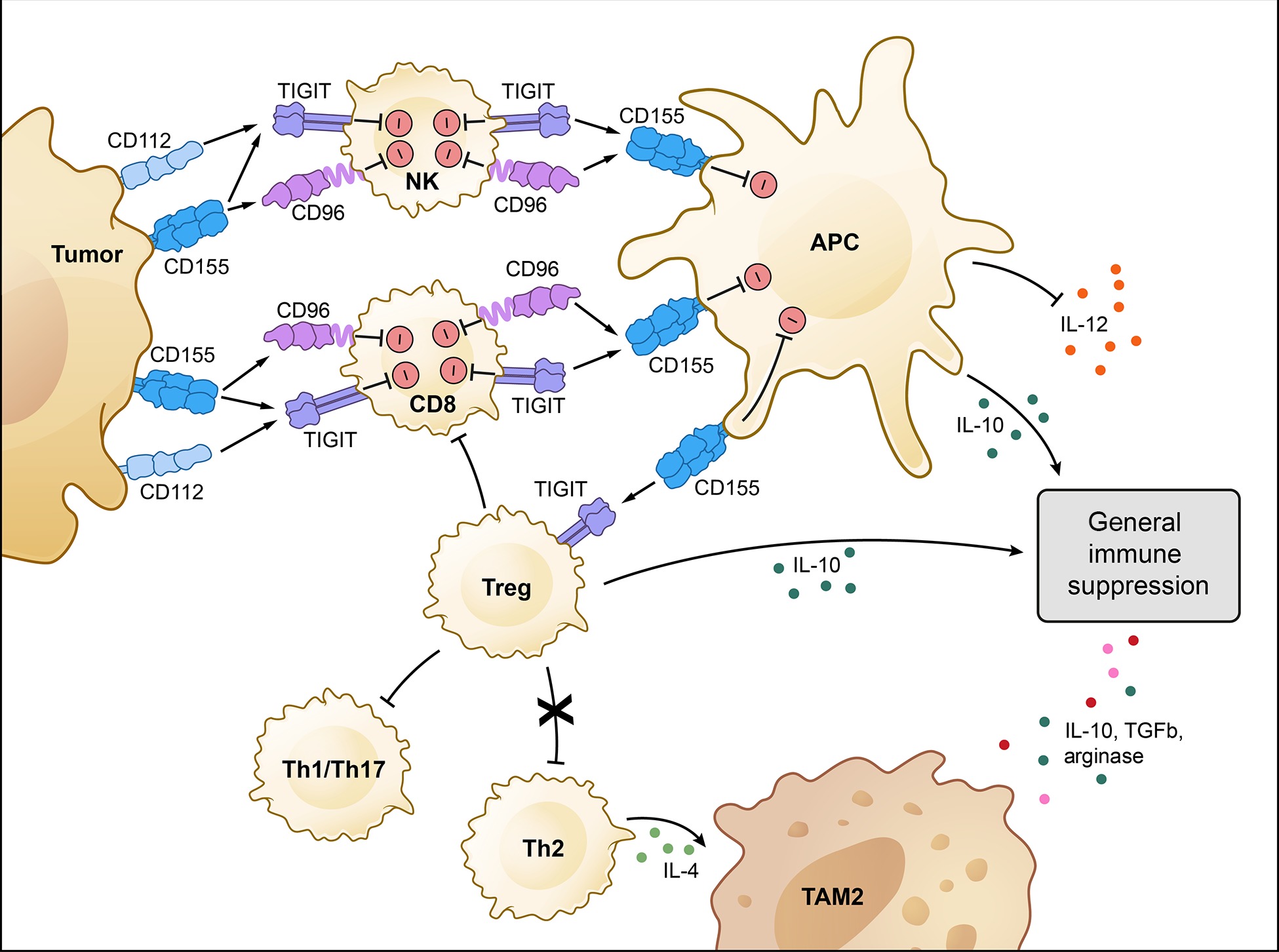Active Recombinant Human CD96 protein(Met1-Met503), His-tagged
| Cat.No. : | CD96-3887H |
| Product Overview : | Recombinant Human CD96 isoform 2 (P40200-2)(Met 1-Met 503) was expressed in HEK293, with a polyhistidine tag at the C-terminus. |
| Availability | April 19, 2025 |
| Unit | |
| Price | |
| Qty |
- Specification
- Gene Information
- Related Products
- Case Study
- Application
- Download
| Species : | Human |
| Source : | HEK293 |
| Tag : | His |
| Protein Length : | Met1-Met503 |
| Form : | Lyophilized from sterile PBS, pH 7.4. Normally 5 % - 8 % trehalose, mannitol and 0.01% Tween80 are added as protectants before lyophilization. |
| Bio-activity : | Measured by its binding ability in a functional ELISA. Immobilized Human CD155/PVR hFc at 2 μg/ml (100 μl/well) can bind Human CD96 His, the EC50 of Human CD96 His is 200-800 ng/mL. |
| Molecular Mass : | The recombinant human CD96 consists of 493 amino acids and predictes a molecular mass of 55 kDa. In SDS-PAGE under reducing conditions, the apparent molecular mass of rh CD96 is approximately 120-130 kDa due to high glycosylation. |
| Endotoxin : | < 1.0 EU per μg of the protein as determined by the LAL method. |
| Purity : | > 90 % as determined by SDS-PAGE |
| Storage : | Samples are stable for up to twelve months from date of receipt at -20°C to -80°C. Store it under sterile conditions at -20°C to -80°C. It is recommended that the protein be aliquoted for optimal storage. Avoid repeated freeze-thaw cycles. |
| Reconstitution : | It is recommended that sterile water be added to the vial to prepare a stock solution of 0.2 ug/ul. Centrifuge the vial at 4°C before opening to recover the entire contents. |
| Gene Name | CD96 CD96 molecule [ Homo sapiens ] |
| Official Symbol | CD96 |
| Synonyms | CD96; CD96 molecule; CD96 antigen; T-cell surface protein tactile; TACTILE; cell surface antigen CD96; T cell activation, increased late expression; t cell-activated increased late expression protein; MGC22596; DKFZp667E2122; |
| Gene ID | 10225 |
| mRNA Refseq | NM_005816 |
| Protein Refseq | NP_005807 |
| MIM | 606037 |
| UniProt ID | P40200 |
| ◆ Recombinant Proteins | ||
| CD96-1124HFL | Recombinant Full Length Human CD96 Protein, C-Flag-tagged | +Inquiry |
| CD96-1561H | Recombinant Human CD96 protein, His-tagged | +Inquiry |
| CD96-151H | Recombinant Human CD96 Protein, His-tagged | +Inquiry |
| CD96-3888H | Active Recombinant Human CD96 Protein, His-Avi-tagged, Biotinylated | +Inquiry |
| CD96-3887H | Active Recombinant Human CD96 protein(Met1-Met503), His-tagged | +Inquiry |
| ◆ Cell & Tissue Lysates | ||
| CD96-1976HCL | Recombinant Human CD96 cell lysate | +Inquiry |
| CD96-1723MCL | Recombinant Mouse CD96 cell lysate | +Inquiry |
Case 1: Wang CQ, et al. Cells. 2023
Immune checkpoint blockade (ICB) therapy aims to boost T cell responses against tumors, but not all patients respond well, suggesting other checkpoints matter. CD96, a potential check, can suppress natural killer cells but its impact on T cells is debated. Our study reveals that CRISPR/Cas9 removing CD96 enhances T cell attack on leukemia cells. Moreover, T cells engineered with CD96-based CARs perform worse against HER2 tumors compared to those without CD96. This indicates CD96 may reduce T cell effectiveness, supporting the idea of using multiple checkpoint targets in therapy.

Fig1. Expression of CD96 in naïve CD4+ and CD8+ T cells at day 0.

Fig2. Expression of CD96 ligands, CD155 and CD111, on K562, MOLM14, U937, MV4
Case 2: Li J, et al. Adv Sci (Weinh). 2023
Targeting CD96 in immune cells has shown promise for cancer treatment, but its role in solid tumor cells was unclear until now. We've discovered CD96 is often found in breast cancer cells and links to worse prognosis. These CD96-positive cancer cells appear to have both stem cell-like qualities and resistance to chemotherapy. Blocking CD96 in these cells boosts chemo effectiveness in tumor models. It seems CD96 promotes chemoresistance by enhancing mitochondrial function through a specific pathway. This unveils a new role for CD96 inside tumor cells, pointing to it as a potential target to improve chemotherapy responses.

Fig1. CD96 expression was evaluated by western blotting.

Fig2. SKBR3 BCSCs were treated with docetaxel in the presence and absence of CD96 blocking antibody, the expression of cleaved/total caspase3 was checked by western blot in 3 independent experiments.

Fig1. TIGIT and CD96-mediated inhibition in cancer. (William C Dougall, 2017)
Not For Human Consumption!
Inquiry
- Reviews
- Q&As
Ask a Question for All CD96 Products
Required fields are marked with *
My Review for All CD96 Products
Required fields are marked with *
Inquiry Basket


